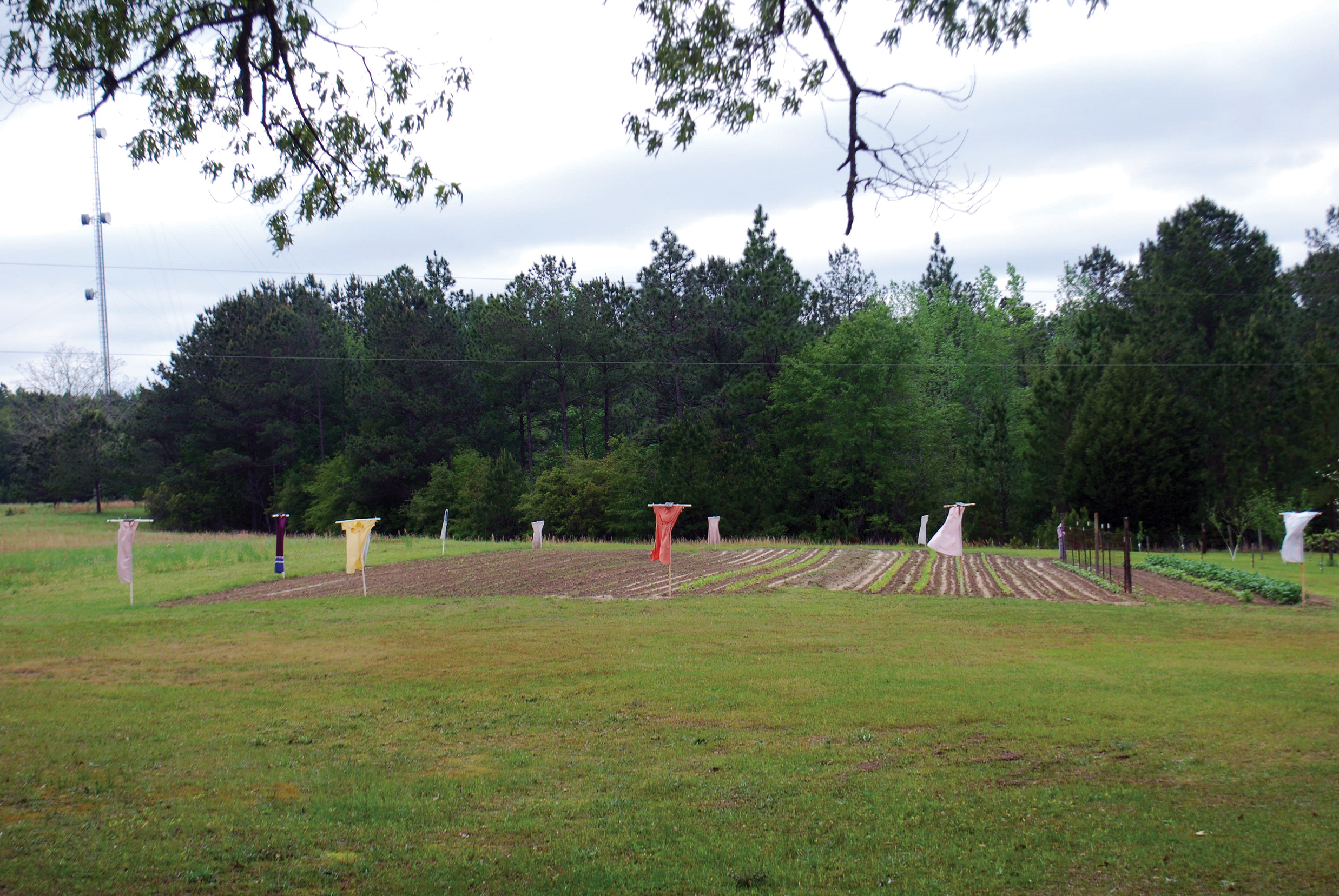To be effective, use the element of surprise
BY KATIE JACKSON
Last April, on a trip to south Alabama, I happened upon a charming roadside sight — a freshly planted garden surrounded by colorful dancing dresses.
Those dresses, located off Interstate 65’s Exit 45 near Rabun, were a beautiful and creative example of how we can use scarecrows and other human- or animal-like figures to frighten away crows, blackbirds and other critters that might plunder a garden. In my case, the whimsical scene drew me in instead of scaring me off, and it also got me thinking about all the ways we can creatively, and effectively, use scarecrows to protect our gardens from hungry foragers.
Scarecrows have been used for centuries, dating back as far as the ancient Egyptians and beyond, to protect gardens from animal pests and they have become both artistic and cultural symbols of gardening across the globe. But do they work?
Well, kind of. The mere presence of a scarecrow or any similar figure will likely keep birds, deer and other potentially damaging animals at bay for a while. But critters are savvy, and they quickly figure out that these stationary garden guardians pose little threat and may even make very fine perches or rubbing posts.
For scarecrows and their kin (such as plastic owls and snakes) to remain effective over time, there must be an element of constant surprise, such as loose clothing, floppy arms and legs or shiny and fluttery accessories (tin plates, old CDs, ribbons or reflective tape, for example) that shift in the wind. Moving the figures around in the garden every few days can also help.
Realizing the limitations of scarecrows, ingenious gardeners have developed other tactics to keep wildlife away. These include mechanized options such as noise guns, motion-activated sprinklers and even piping in sporadic bursts of loud music or the calls of owls and hawks. Physical barriers such as fencing, bird netting, floating row covers or threads of fishing line strung in a random web over a garden plot can also be effective. In addition, natural and manufactured repellents, from chemical sprays to balls of human hair, can be helpful.
 No matter how hard we try to keep animals out of our gardens, though, it’s likely that we won’t be able to keep them all at bay, so one option is to plant enough fruits and vegetables to share with wildlife. Or, especially in the case of deer eating landscape plants, providing them with a supply of other plants that are tastier than your beloved shrubs can help. Having a dog in the yard is also pretty darned effective against deer.
No matter how hard we try to keep animals out of our gardens, though, it’s likely that we won’t be able to keep them all at bay, so one option is to plant enough fruits and vegetables to share with wildlife. Or, especially in the case of deer eating landscape plants, providing them with a supply of other plants that are tastier than your beloved shrubs can help. Having a dog in the yard is also pretty darned effective against deer.
Still, whether they help keep critters away or not, scarecrows are lots of fun to make, especially if you get children involved. They can also become works of art for your yard or to enter in a community scarecrow contest.
A basic scarecrow can be made using items you’re likely to have on hand. Repurpose old panty hose (for the head, legs and arms) or a pillow case (for the head), a couple of boards or some sticks lashed together for a stand and use old clothes, hats, scarves and the like to create a traditional scarecrow. Or clean out your closet and put up some dresses.
An abundance of ideas for scarecrows can be found in books and magazines and, of course, online. I found one particularly helpful site at www.makescarecrows.com, which includes lists of ideas ranging from basic scarecrow designs to more elaborate options — how about a whole family of scarecrows, a movie-star scarecrow or even a scare-donkey?
Check them out and, if you’re inspired to create your own scarecrow, send me pictures!
Katie Jackson is a freelance writer and editor based in Opelika, Alabama. Contact her at katielamarjackson@gmail.com.






